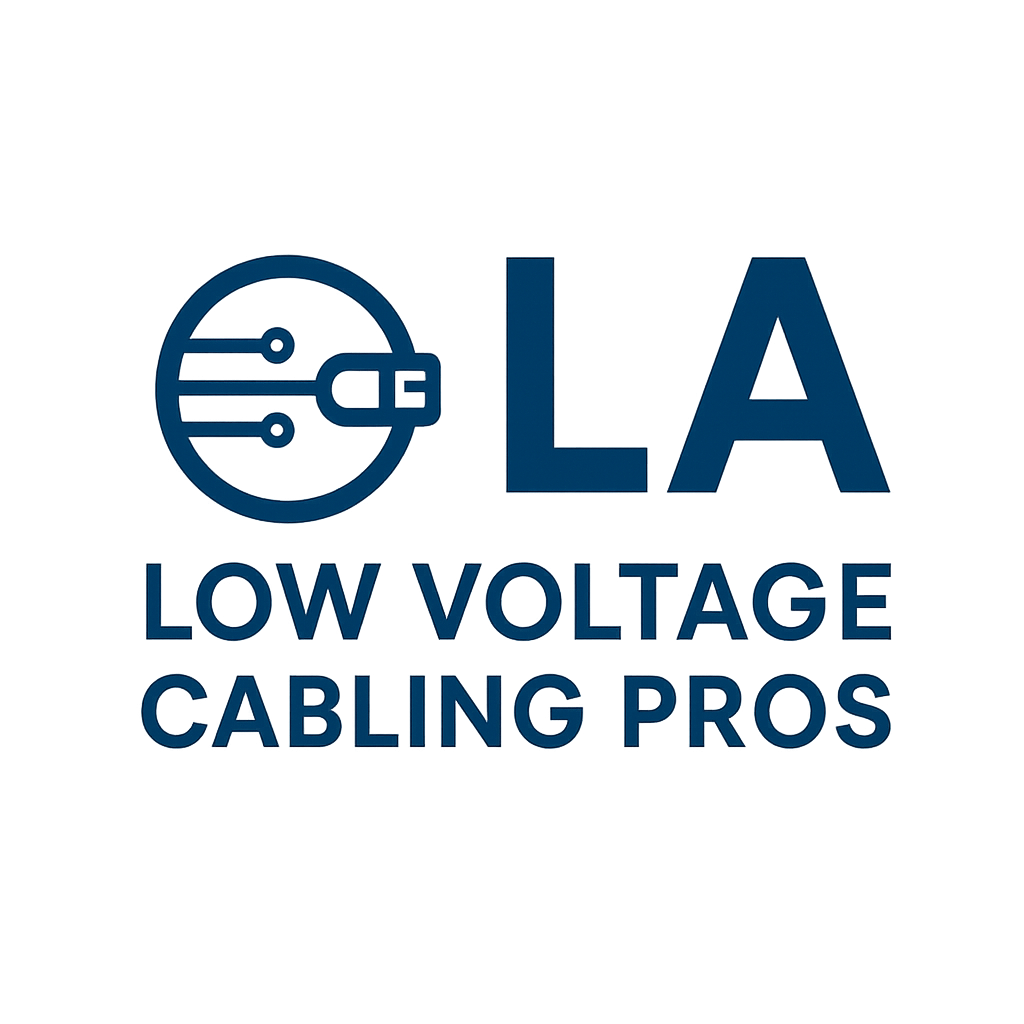Common Low Voltage Installation Mistakes and How to Avoid Them
Low voltage systems play a major role in powering today’s technology—from security cameras and access control to data networks and home automation. But even though these systems use less power than traditional electrical wiring, low voltage installations still require careful planning and professional workmanship. Small mistakes can lead to poor performance, safety issues, and costly rework.
Whether you’re managing a commercial project or upgrading your home, understanding the most common low voltage installation mistakes can save you time, money, and frustration. At LA Low Voltage Cabling Pros, we provide expert solutions for all your cabling and network needs.
What Is Low Voltage Installation?
Low voltage refers to electrical systems operating below 50 volts. These include:
- Network and data cabling (CAT5e, CAT6, fiber)
- Security cameras (CCTV)
- Fire alarms and smoke detectors
- Access control systems
- Audio-visual setups
- Smart home devices
Because low voltage wiring carries smaller electrical currents, it’s safer to handle—but it still needs to be installed according to National Electrical Code (NEC) standards and local building regulations.
1. Ignoring Code Compliance
One of the biggest mistakes in low voltage installation is skipping or misunderstanding code requirements. California, for instance, has strict building codes that regulate low voltage wiring—especially in commercial buildings and multi-unit residences.
Failing to follow these codes can lead to:
- Failed inspections
- Network interference
- Fire hazards
- Costly reinstallation
Always ensure your installer holds a C-7 (Low Voltage Systems) license and follows NEC Article 725 for power-limited circuits and Title 24 for California energy compliance.
2. Mixing Power and Data Cables
A common but serious mistake is running low voltage cables too close to electrical wiring. When power and data cables share the same conduit or pathway, electromagnetic interference (EMI) can degrade signal quality, slow your network, or cause equipment failures.
To prevent this:
- Maintain at least 12 inches of separation between power and data lines.
- Use shielded cables (STP) for areas with high interference.
- Plan cable routes carefully before installation begins.
3. Poor Cable Management
Messy wiring isn’t just an eyesore—it makes troubleshooting and maintenance much harder. Over-tightened zip ties, sharp bends, and unorganized bundles can damage cables and reduce signal performance.
Best practices include:
- Using Velcro straps instead of tight plastic ties
- Labeling every cable at both ends
- Maintaining proper bend radius (no sharp corners)
- Installing organized racks, trays, and conduits
Good cable management not only looks professional but also ensures your system performs reliably for years. Many installation mistakes can be avoided with proper maintenance—consider our low voltage maintenance contracts to keep your system running smoothly.
4. Using the Wrong Type of Cable
Not all cables are created equal. One of the most common errors is choosing the wrong category or jacket type for your environment.
For example:
- CAT5e may work for basic networks, but CAT6 or CAT6A supports faster speeds and longer distances.
- In buildings with air circulation systems, plenum-rated (CMP) cables are required by code.
- Outdoor installations need UV-resistant or direct-burial cables.
Always verify that the cable type matches your application, speed requirements, and local fire-safety regulations.
5. Skipping Cable Testing and Certification
Even the most carefully installed system can fail if cables aren’t properly tested. Unfortunately, many DIY or low-cost installers skip this step, leading to hidden defects that appear months later.
Professional installers use certified cable testers to verify:
- Signal strength and continuity
- Interference levels
- Proper terminations
- Compliance with TIA/EIA performance standards
Testing ensures every connection meets the expected performance rating before the project is complete.
6. Failing to Plan for Future Expansion
Technology evolves quickly. A network or security system that works today may not handle tomorrow’s data demands. Installing just enough capacity for your current setup is a short-term fix that can become costly later.
To avoid this:
- Include extra conduits or cable runs for future upgrades.
- Choose CAT6A or fiber-optic cabling to support higher bandwidth.
- Label and document your entire cabling layout for easy upgrades.
Forward-thinking design is key to building a scalable, future-ready system.
7. Hiring Unqualified or Unlicensed Installers
Low voltage work may seem simple, but improper installation can cause long-term performance issues and even void your equipment warranties. Always hire licensed low voltage contractors with proven experience in network design, testing, and California code compliance.
Look for professionals who:
- Have C-7 Low Voltage Systems licenses
- Provide as-built documentation and test results
- Offer warranties and maintenance support
- Use certified materials and follow TIA/EIA standards
Avoiding Low Voltage Installation Mistakes
The best way to avoid these issues is by working with experienced low voltage professionals who understand both the technical and regulatory aspects of installation. A certified installer ensures that every wire, connection, and pathway is correctly placed, labeled, and tested for long-term reliability.
Whether you’re wiring a new office, upgrading your security cameras, or installing a structured cabling system, taking the time to do it right the first time will save you from expensive headaches later. Office setups often face unique challenges—explore our low voltage cabling for offices services to ensure a clean and efficient installation.
Upgrade Your Low Voltage Systems with Confidence
If you’re planning a low voltage installation in California, don’t cut corners. Partner with licensed experts who can design, install, and test your system according to the highest standards. A professional approach ensures your setup is safe, efficient, and ready for future technologies.
Contact your trusted low voltage installation specialists today to learn how to build a system that’s reliable, code-compliant, and built to last.
